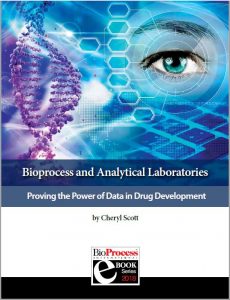 Analytics pervade the entire biopharmaceutical development process — from protein characterization through biomanufacturing process optimization to final-product formulation and clinical testing. Every technical article in BPI requires data to back up the statements made, whether the topic is upstream/production, downstream processing, product development, or otherwise focused. And never mind publishing: Even more detailed documentation is required for regulatory submissions. If a company can’t back up the choices made and results obtained in development, manufacturing, and testing of its biopharmaceutical product, then that drug will never find its way to market or the patients who might have benefited from it.
Analytics pervade the entire biopharmaceutical development process — from protein characterization through biomanufacturing process optimization to final-product formulation and clinical testing. Every technical article in BPI requires data to back up the statements made, whether the topic is upstream/production, downstream processing, product development, or otherwise focused. And never mind publishing: Even more detailed documentation is required for regulatory submissions. If a company can’t back up the choices made and results obtained in development, manufacturing, and testing of its biopharmaceutical product, then that drug will never find its way to market or the patients who might have benefited from it.
Behind the scenes of every shining labyrinth of stainless steel and every set of futuristic cleanroom suites outfitted in plastics, you’ll find not one, but a number of laboratories devoted to quality, development, and regulatory compliance support — and a cadre of expert scientists who populate them. A year ago, I plunged into the workings of bioprocess laboratories by elucidating the instrumentation most commonly found there and the applications in which each technology shines (1). A month later, BPI took a step back to look at a bigger picture, as managing editor Maribel Rios and I wrote in our 15-year anniversary “State of the Industry” issue on the concerns of laboratory managers and analysts (2, 3). Here I seek the middle ground occupied by issues that govern choices made in bioprocess laboratories: namely, business matters and the feedback loop of evolving technologies and regulations.
Just fill out the form to view and download the complete eBook.
